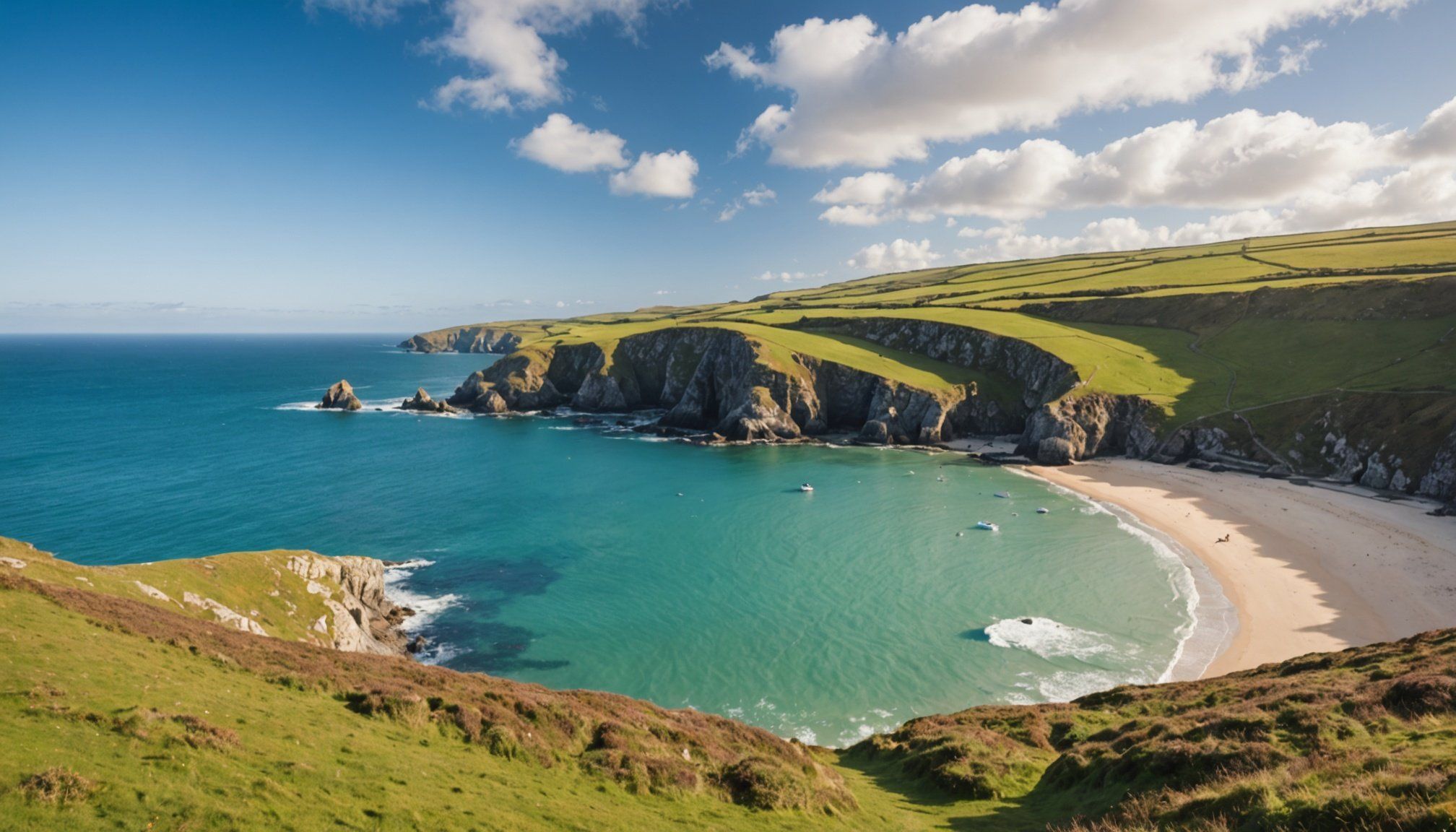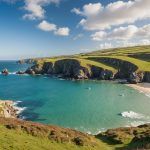Understanding the Unique Scenery of Cornwall’s Coastline
Cornwall’s coastline is renowned for its scenic landscapes that offer a rich canvas for photography enthusiasts. This region’s coastal geography is marked by towering cliffs, diverse marine life, and sprawling sandy beaches, all of which significantly impact how photographers capture its beauty. The coastal beauty of Cornwall is accentuated by its distinctive features, such as dramatic rock formations and tidal patterns, offering photographers varied and breathtaking subjects.
When photographing this majestic scenery, it’s crucial to consider the time of year and prevailing weather conditions. Each season brings unique lighting and environmental changes that can dramatically alter the landscape’s appearance. For instance, winter brings strong waves which create dynamic Cornwall coastline photography opportunities, while summer offers longer daylight hours, providing ample time for capturing the stunning vistas.
Also to discover : Uncover Edinburgh’s Top Festivals Celebrating Scottish Poetic Heritage
Photographers must adjust their techniques to these conditions, as lighting varies from season to season. This adaptability ensures optimal use of Cornwall’s natural light and enhances the overall quality of the photographs. Embracing these varied conditions allows photographers to fully appreciate and capture the coastal beauty that makes Cornwall such a magical destination.
Essential Photography Techniques for Coastal Landscapes
Crafting stunning coastal photography involves mastering specific techniques. A key aspect of landscape composition is framing. Photographers should consider using leading lines from the coastline to guide viewers’ eyes through the photograph, adding layers and depth. Placing focal points such as rock formations or lighthouses strategically enhances the narrative of the image.
Additional reading : Exploring Breathtaking Lake District Trails: The Definitive Biker’s Handbook
Long exposure techniques are an invaluable tool in capturing the dynamic interplay between land and sea. By utilising slower shutter speeds, moving elements like water can be blurred to convey motion, creating a dreamlike quality. This technique can transform turbulent waves into ethereal textures, adding intrigue to your composition.
Focusing on foreground elements is crucial in coastal photography. A well-chosen object, be it driftwood or sea flowers, can serve as an anchor for the scene, providing depth and context. It enriches the visual experience by creating a sense of scale against the expansive sea backdrop.
Utilising these photography techniques ensures photographers effectively capture the mesmerising beauty of Cornwall’s coastlines, enhancing their photographic endeavour with engaging compositions and dynamic visuals. Explore these strategies to elevate your coastal photography to an art form.
Navigating Cornwall’s Best Coastal Walking Routes
Cornwall offers an abundance of best coastal walks perfect for photographers looking to capture breathtaking shots. The South West Coast Path provides a tapestry of scenic hikes, with iconic sections like the Lizard Peninsula offering sweeping views and diverse landscapes. Here, jagged cliffs provide dramatic backdrops, while the shifting tides introduce dynamic elements into your photography.
Popular Coastal Trails for Photographers
Famed for its picturesque vistas, the St. Ives to Zennor trail boasts stunning vantage points over the Atlantic. Walking this route offers photographers opportunities to capture the interplay of light on the water and rugged terrain. Similarly, the Bedruthan Steps coastline is a must-visit, renowned for its towering rock stacks framed by swirling waves.
Hidden Gems in Cornwall for Unique Shots
Beyond popular trails, Cornwall hides lesser-known paths that promise equally stunning scenes. Gwennap Head, with its dramatic sea views and lichen-covered rocks, is ideal for unique photography. The Rame Peninsula offers secluded beaches and tranquil pathways, suited for capturing serene landscapes away from the crowd.
Safety Considerations on Coastal Walks
While exploring these walking routes in Cornwall, photographers should prepare for quickly changing weather conditions. Equip yourself with sturdy footwear, check tide times for coastal areas, and ensure you have a map or navigation app to maintain safety on unfamiliar paths.
Ideal Photography Equipment for Coastal Scenes
Capturing the coastal beauty of Cornwall requires the right photography gear. Choosing the perfect camera and lenses is essential for achieving the desired landscape shots. A DSLR or mirrorless camera with interchangeable lenses offers flexibility and superior image quality needed for Cornwall coastline photography. A wide-angle lens is particularly useful for capturing expansive scenic landscapes, while a telephoto lens can focus on distant subjects, such as seabirds or cliffs.
A sturdy tripod is indispensable for coastal conditions. It stabilises the camera during long exposure shots, ensuring sharp images despite wind and waves. Additionally, filters, such as a polarising filter, can be used to reduce glare from the ocean and enhance the sky’s colour. Neutral density filters are another excellent accessory, allowing photographers to use slower shutter speeds even in bright light.
Considering the unpredictable coastal weather, a weather-sealed camera body and lens can be beneficial. Moreover, a camera bag with proper waterproofing will protect your equipment from the elements. These coastal photography equipment tips will help photographers navigate Cornwall’s unique coastal environment, ensuring they capture the magic of its landscapes with ease.
Mastering Lighting Conditions for Stunning Photos
Navigating photography lighting is crucial in capturing the essence of Cornwall’s coastal landscapes. The play of natural light can dramatically alter the mood and aesthetic of a photograph. During the golden hour, just after sunrise or before sunset, the light is soft, warm, and perfect for highlighting the coastal beauty, casting long shadows and adding depth to the landscape composition.
Conversely, the blue hour—the twilight period just before sunrise and after sunset—offers a cool and tranquil light, ideal for creating serene and atmospheric photographs. This time is excellent for capturing the magical transition of the sky and sea colours, enhancing the overall visual impact of your photos.
Midday sun presents a unique challenge due to harsh lighting and strong shadows. However, by employing natural light techniques such as using a polarising filter, photographers can reduce glare and maintain colour balance. Additionally, positioning the sun behind the subject or using shaded areas can create softer lighting. Understanding these lighting conditions allows photographers to adapt their strategies, ensuring stunning captures regardless of time and weather.
Inspiring Captures: Showcase of Stunning Coastal Photography
Immerse yourself in the world of coastal photography examples, where Cornwall’s coastline acts as an endless source of visual inspiration for photographers. This curated collection highlights breathtaking images that capture the region’s natural beauty, offering a testament to skilled artistry and attentive eye.
Critical to these images’ success is their attention to detail in landscape composition. Photographers often employ techniques like utilising leading lines to guide the viewer’s gaze across the frame. Notice how compositions typically anchor the eye with a bold foreground element, juxtaposed against the expansive sea, creating depth and intrigue. By incorporating long exposure techniques, these photos transform rushing waves into serene, dreamlike patterns, adding an ethereal quality to the pictures.
Aspiring photographers can enhance their own photography portfolio by studying these effective techniques. Look for shots that play with contrasts in lighting, especially during golden and blue hours, to emphasise the unique characteristics of Cornwall’s coastal beauty. By engaging with the artistry of seasoned photographers, one can draw significant inspiration and further develop their craft. Enrich your photographic pursuits by seeking inspiration and learning from these captivating coastal captures.
Local Insights: Tips from Cornwall Photographers
Embarking on Cornwall coastline photography can be significantly enriched by insights from local photographers. These professionals, familiar with the region’s scenic landscapes, offer invaluable advice on capturing the area’s unique allure.
One prominent piece of advice is to engage actively with local communities. By networking with residents or fellow photographers, you may discover hidden spots offering breathtaking views, adding another layer to your coastal photography.
Local photographers stress the importance of timing: sunrise or sunset, known as golden hour, provides optimal lighting conditions that enhance Cornwall’s coastal beauty. They also suggest keeping an eye on weather forecasts, as shifting skies can dramatically alter the landscape’s appearance and mood.
Many recommend taking advantage of photography workshops offered throughout Cornwall. These workshops not only provide technical skills but also offer opportunities to explore local seaside scenery under expert guidance. Investing in a photography portfolio development course can further polish one’s skills by learning from seasoned photographers and their work.
Engaging with the local photography community provides unique perspectives and practical tips that enhance your experience and skills in capturing Cornwall’s stunning coastlines.
Best Times of Year for Coastal Photography in Cornwall
Cornwall’s seasonal photography offers diverse and captivating scenes throughout the year. Identifying the best times for photography is crucial for capturing optimal coastal beauty in your images. Each season in Cornwall presents unique characteristics, greatly influencing photographic opportunities and outcomes.
Spring, with its bloom of wildflowers along the cliffs, provides vibrant backdrops for your images. The mild temperatures and clear skies also offer ideal conditions for Cornwall coastline photography. Meanwhile, summer presents longer daylight hours, allowing photographers more time to explore and capture the landscapes under varied lighting conditions, enhancing the scenic appeal.
As autumn arrives, the changing foliage introduces rich colours, paired with dramatic skies, creating a striking contrast against the coastal vistas. However, winter delivers strong waves and atmospheric conditions that can add dynamic elements and mood to your photography, perfect for crafting dramatic compositions.
Planning around local events and natural phenomena, such as the spring equinox tides or summer festivals, can further elevate your seasonal photography. By understanding Cornwall’s seasonal changes, photographers can strategically schedule their trips to harness the distinct atmospheric conditions that each time of year offers.










